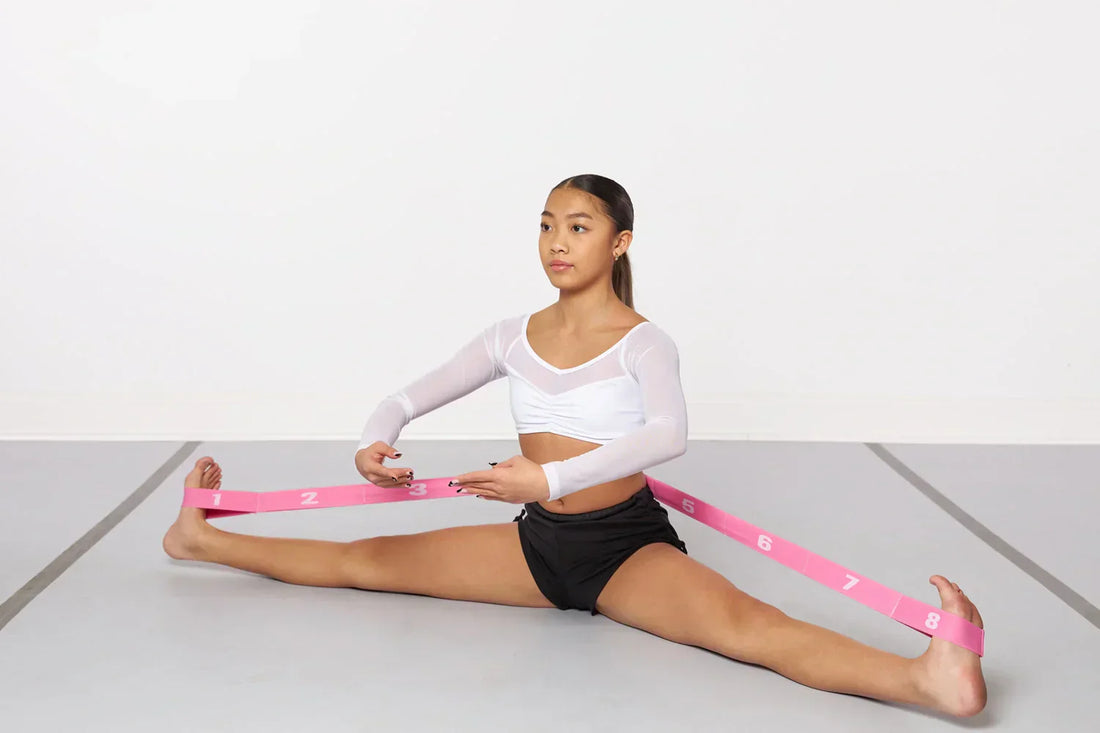Tips for Improving Flexibility: Daily Routines for Dancers
Flexibility is essential for dancers at every level, enhancing movement range, reducing the risk of injury, and allowing for more fluid and graceful movement. Whether you're working toward a higher arabesque, improved splits, or beautiful tilts, improving flexibility is a journey that requires consistency and proper technique. This guide outlines daily routines and practical tips to help dancers of all levels increase flexibility safely and effectively.
Why Flexibility Matters for Dancers
Flexibility training is vital for dancers as it enhances range of motion, technique, and overall performance. It prevents injuries by reducing muscle tightness and supports better strength, alignment, and posture. Flexibility also helps create beautiful lines and ensures adaptability across styles. Additionally, it promotes recovery, reduces soreness, and improves mental focus, making it essential for both physical and artistic success.
Key Areas to Focus On
To effectively improve flexibility, dancers need to target multiple muscle groups and joints that play essential roles in dance movements:
-
Hamstrings and Quadriceps
Flexible hamstrings contribute to higher leg extensions, while mobile quads help achieve straight knees. -
Hips and Hip Flexors
Mobility in the hips is crucial for a large range of movements including straddles and leaps.
-
Back and Spine
A flexible spine allows for deeper cambres, higher arabesques, and smoother port de bras.
-
Ankles and Feet
Flexible and strong ankles enhance relevés, pointe work, and jumps.
Flexibility Routine for Dancers
Incorporate the following routine into your practice to gradually increase flexibility. Each stretch targets key areas while promoting overall mobility and flexibility. The below exercises will be focused on dynamic flexibility instead of static stretching. Perform the routine 3-5x/week for best results.
Warm-Up (5–10 Minutes)
Warming up is critical before stretching. Light cardio activities like jogging in place or gentle dance movements prepare your muscles and joints for deeper work.
Hamstring Stretch: Flat Back
- Stand with feet hip-width apart and flat back forward.
- Relax the spine and reach for the toes when no longer able to hold a flat back.
- Focus on your breath as you deepen the stretch.
- Advanced Version: Add a yoga block under each of the feet.
Hip Flexor & Quad Stretch: Demi Lunge Press
- Step one leg forward into a lunge position, placing the back knee on a block.
- Press your hips forward, maintaining an upright posture and alignment of the hips.
- Ensure a long upper back leg to ensure a deep stretch of the hip and quad.
Spilt Stretch: Lunge Splits
- Beginning in a lunge position with a Godfrey Method Block on their side in each hand.
- Blocks should be approximately in line with the front foot.
- Blocks should be approximately in line with the front foot.
- Maintain the pop of the back foot, slide the front leg straight and keep a tall long spine.
- Lower the hips as close to the floor as possible while keeping the back leg straight and square hips.
Hip Circles: Hip Opener
- Laying on your back with knees pulled into the chest (hugged).
- While holding the knees, circle them outward 8 times and then repeat inwards for 8 times.
- For a greater challenge straighten the legs and remove the hands to also incorporate strength work.
Ankle and Foot Mobility: Point and Flex
- Sit with your legs extended and alternate pointing and flexing your toes.
- Be sure to focus on a clean articulation with no sickling of the foot.
- Be sure to focus on a clean articulation with no sickling of the foot.
- For added intensity, use a resistance band to stretch the tops and bottoms of your feet.
Tips for Safely Increasing Flexibility
-
Consistency Is Key
Flexibility improves over time with regular practice. Dedicate time 3-5 times/week to stretching and mobility work.
-
Listen to Your Body
Avoid overstretching, which can lead to injury. If pain is ever felt, stop immediately and consult a teacher or doctor.
-
Pair Flexibility with Strength
Strong muscles support deeper stretches. For example, pair hamstring stretches with single-leg pelvic bridge exercises to build complementary strength.
-
Use Equipment
Yoga blocks, straps, or resistance bands can help you achieve deeper stretches safely.
-
Rest and Recovery
Rest and recovery are essential for improving flexibility as they allow muscles to repair, adapt, and help prevent injuries.
Additional Exercises to Improve Flexibility
To complement the stretches above, incorporate strength-building routines and static stretches (following a strong warm up). Many of these exercises align with lessons available on The Godfrey Method On Demand, such as:
-
Flexibility for Straighter Knees: Focuses on improving hamstring and quad flexibility.
-
Flat Straddle: Targeted stretches for enhancing straddle flexibility.
- Hip Mobility: A step-by-step guide to unlocking greater hip flexibility and mobility.
These lessons provide targeted guidance for dancers looking to increase flexibility while maintaining proper technique.
Final Thoughts
Increasing flexibility is a gradual process that requires patience, consistency, and proper technique. By incorporating these routines into your practice, you’ll see steady improvement in your range of motion, stability, and overall performance. Whether you’re a beginner building foundational flexibility or an experienced dancer refining your craft, these stretches and tips can help you achieve your goals.
Improving flexibility is about more than just physical ability—it’s a way to connect with your body, enhance your artistry, and unlock new possibilities in your dance journey. Take it one stretch at a time, stay consistent, and enjoy the process!

